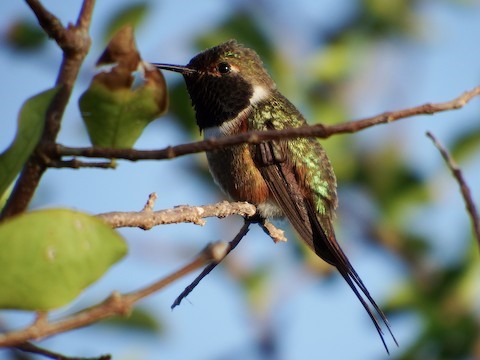Birdfinding.info ⇒ Common in its small range, most of which is not readily accessible. It can generally be found in the only accessible area: Matthew Town on Great Inagua. In the dry season, roughly January through April, it becomes very common in gardens within the town. At other times of year, it can be found more easily in natural habitats east of the town.
Inagua Woodstar
Nesophlox lyrura
Endemic to Great and Little Inagua, the southernmost islands of the Bahamas, where it occurs in coppice woodland, scrub, and gardens.
Identification
A small, slender hummingbird with a thin, slightly downcurved bill and variably rusty, cinnamon, or buffy underparts, very similar to the closely related Bahama Woodstar.
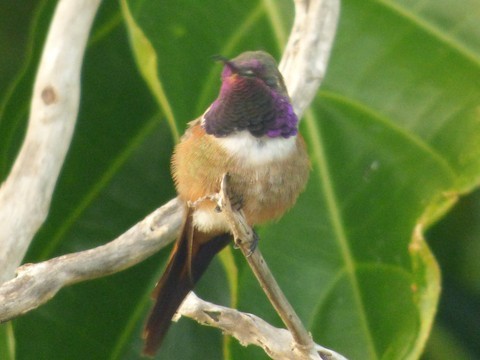
Inagua Woodstar, male showing buffy underparts and long-thin tail. (Matthew Town, Great Inagua, Bahamas; January 11, 2017.) © Tarra Lindo
Adult males have a purple to rose gorget and long, deeply forked, black-and-cinnamon striped tail.
The gorget is black in low light and in strong light its iridescent glow can vary from deep violet to pale pink.
The male’s underparts can be either buffy or rusty, with a broad white crescent across the chest.
Small rufous patches under the base of the wings are often prominent in flight, but usually concealed at rest.
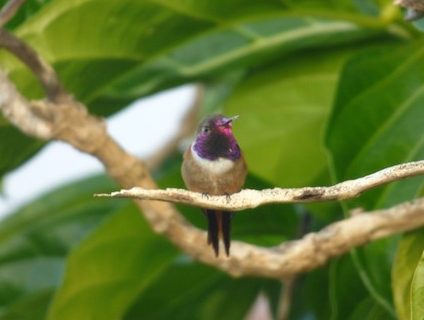
Bahama Woodstar, male with gorget showing as purple—note black and cinnamon stripes on tail. (La Bougainvillea, Eleuthera, Bahamas; April 10, 2019.) © Jim Merritt
The male Inagua Woodstar differs from Bahama Woodstar in that the iridescence of its gorget extends onto its forehead and its tail is longer, thinner, and more deeply forked. In particular, the outer tail feathers are about 20% longer and have a slight outward curvature.
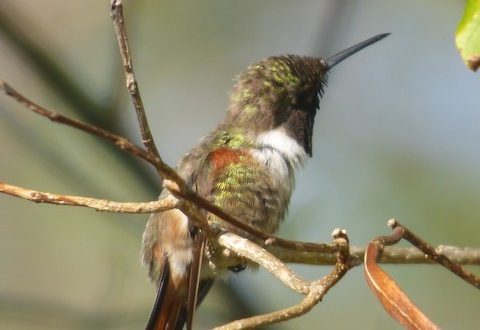
Inagua Woodstar, male showing rusty shoulder patch. (Matthew Town, Great Inagua, Bahamas; February 25, 2017.) © Tarra Lindo
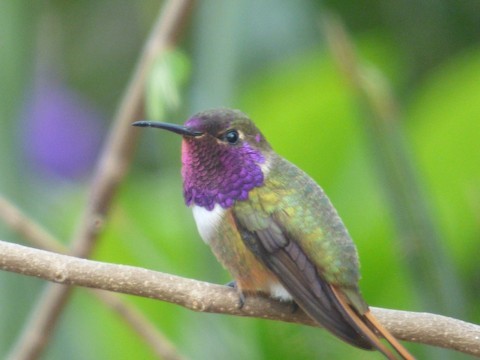
Inagua Woodstar, male showing one of its diagnostic features, the extension of iridescence onto the forehead. (Matthew Town, Great Inagua, Bahamas; February 26, 2017.) © Tarra Lindo
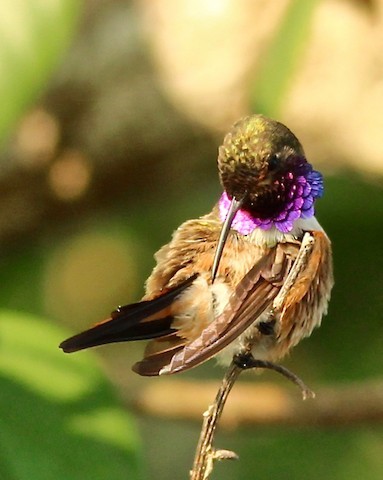
Inagua Woodstar, male preening. (Matthew Town, Great Inagua, Bahamas; March 22, 2018.) © Stuart White
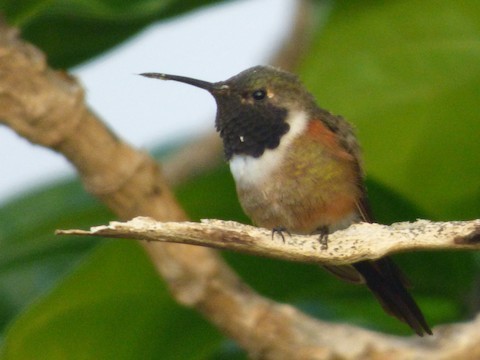
Inagua Woodstar, male. (Matthew Town, Great Inagua, Bahamas; January 17, 2017.) © Tarra Lindo
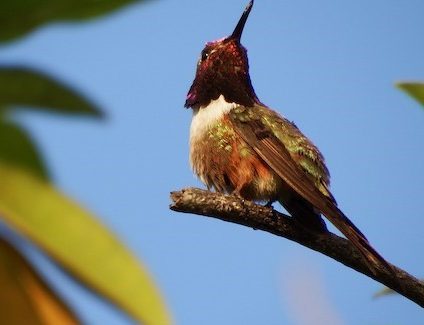
Inagua Woodstar, male. (Matthew Town, Great Inagua, Bahamas; January 5, 2017.) © Randolph “Casper” Burrows
Females and immature males are somewhat nondescript, and not readily distinguishable from Bahama Woodstar. They usually show a muted version of the male’s body plumage: a buffy vest, white crescent on the chest, and rusty patches under the base of the wings, mainly visible in flight.
The female’s tail is rounded at the corners. Its pattern is distinctive: the three outer feathers are mostly cinnamon at the base and tips, with a black band in the middle.
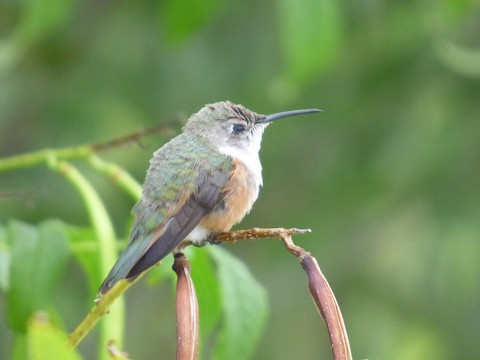
Inagua Woodstar, female. (Matthew Town, Great Inagua, Bahamas; February 26, 2017.) © Tarra Lindo
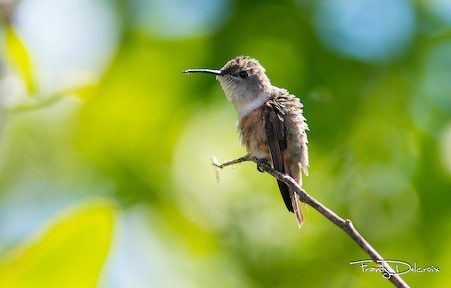
Inagua Woodstar, female or immature male. (Matthew Town, Great Inagua, Bahamas; October 23, 2017.) © Frantz Delcroix
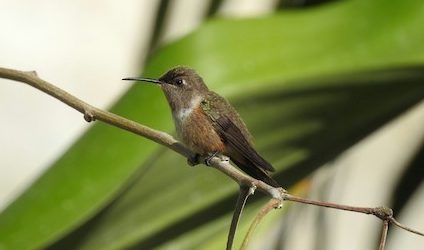
Inagua Woodstar, female or immature male. (Matthew Town, Great Inagua, Bahamas; February 17, 2017.) © Dean Mullings
Notes
Monotypic species. Traditionally considered conspecific with Bahama Woodstar, but differences in morphology, vocalizations, mechanical sounds, and genetics support recognition as a separate species.
References
BirdLife International. 2018. Nesophlox lyrura. The IUCN Red List of Threatened Species 2018: e.T133484007A133490508. http://dx.doi.org/10.2305/IUCN.UK.2018-2.RLTS.T133484007A133490508.en. (Accessed August 8, 2019.)
eBird. 2019. eBird: An online database of bird distribution and abundance. Cornell Lab of Ornithology, Ithaca, N.Y. http://www.ebird.org. (Accessed August 9, 2019.)
Feo, T.J., J.M. Musser, J. Berv, and C.J. Clark. 2015. Divergence in morphology, calls, song, mechanical sounds, and genetics supports species status for the Inaguan hummingbird (Trochilidae: Calliphlox “evelynae” lyrura). Auk 132:248-264.
Fogden, M., M. Taylor, and S.L. Williamson. 2014. Hummingbirds: A Life-size Guide to Every Species. HarperCollins, New York.
Kirwan, G.M. 2019. Lyre-tailed Hummingbird (Nesophlox lyrura). In Handbook of the Birds of the World Alive (J. del Hoyo, A. Elliott, J. Sargatal, D.A. Christie, and E. de Juana, eds.). Lynx Edicions, Barcelona. https://www.hbw.com/node/1538355. (August 8, 2019.)
Raffaele, H., J. Wiley, O. Garrido, A. Keith, and J. Raffaele. 1998. A Guide to the Birds of the West Indies. Princeton University Press, Princeton, N.J.
